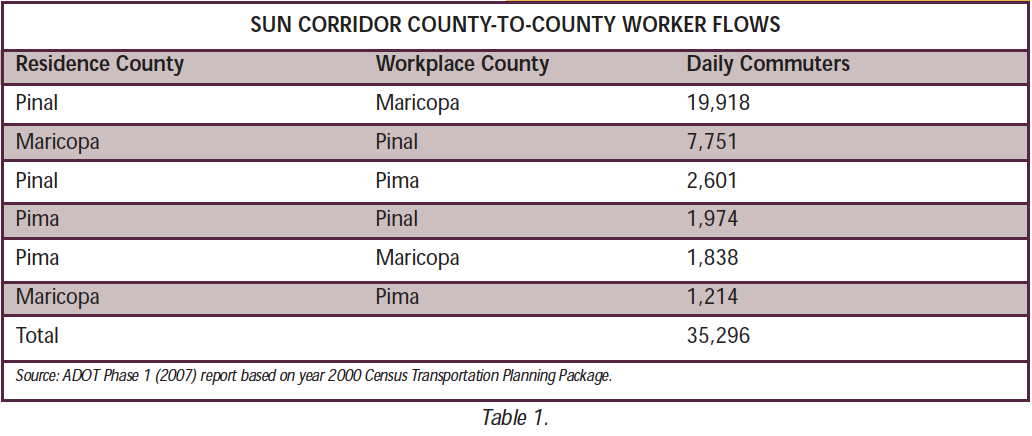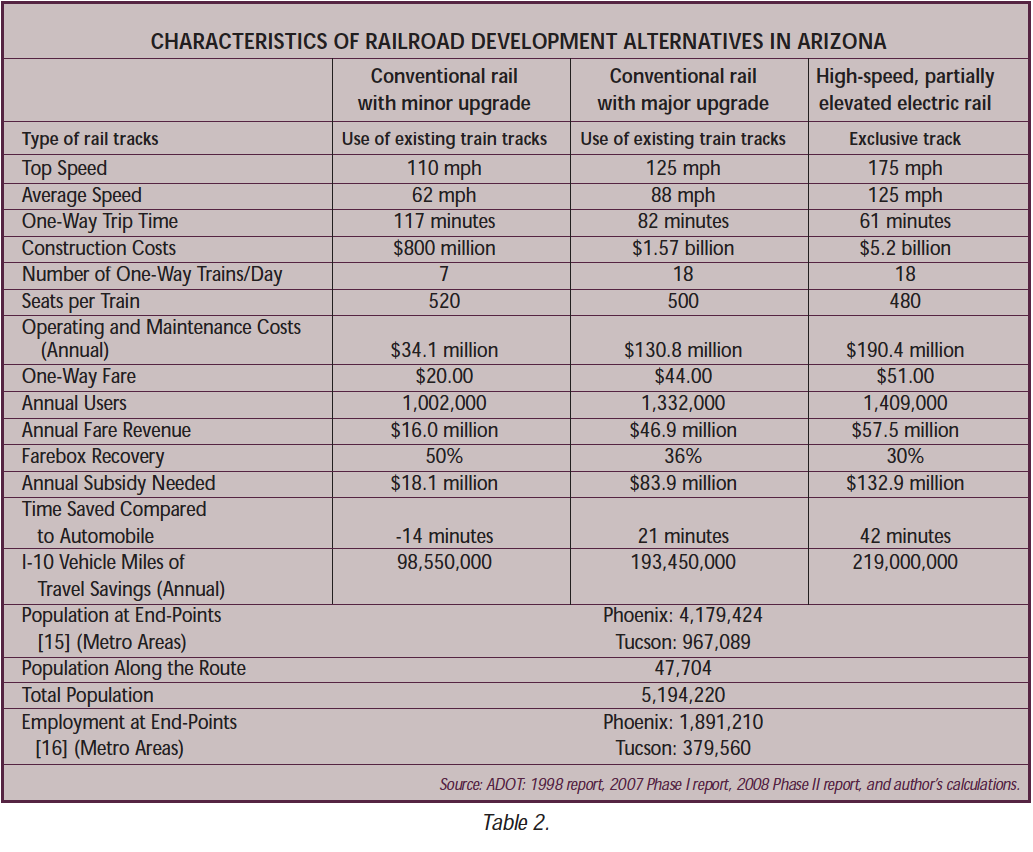SONORAN INSTITUTE
In the Beginning
Going back as early as the late 19th century, the United States made its mark in rail travel by pioneering high-speed rail and introducing the first train to break 100 mph. Continuing into the early 20th century, America led the world in development of mass transit systems (Litman, 2008). By the 1930s there were numerous rail lines across the nation that scheduled runs in excess of 100 mph (Vranich, 1991). Over the course of the 20th century, however, rail travel declined significantly. The rising prominence of the personal automobile along with the development of the Interstate Highway System, not to mention commercial aviation, played a key factor in the declining railway transportation system. In fact, the United States became an increasingly automobile dependent nation and the development of rail transit severely lagged behind other regions of the world such as Europe and Japan.
The new millennium would bring a new economic and environmental climate that would draw attention to transportation alternatives. America’s transportation needs have changed dramatically since construction of the coast-to-coast Interstate Highway System more than a half-century ago. The new focus: cleaner, more affordable transportation options.
In fact, multi-modal transit options that include bus, light rail and commuter rail in an integrated transportation system are now recognized as critical to long-range planning in many western regions and cities. Such transportation infrastructure is important in guiding new growth and development. Transit-oriented development (TOD) also helps to promote regional connectivity, meet housing needs, encourage neighborhoods and create walkable communities.
Is rail transit the option that will move the transportation system in the right direction? Cost-effectiveness and environmental impact are the key criteria to consider. Now is the time to explore a few misconceptions about rail travel and review the potential benefits.
Phoenix-Tucson Passenger Rail
Serving Arizona’s Sun Corridor
In a 2009 briefing to the 94th Arizona Town Hall on transportation opportunities, research economists and faculty from Arizona State University presented information and data focusing on long-distance passenger rail service between Phoenix and Tucson. The report by Matthew Croucher, Tim James and Eva Madly used data primarily from the Arizona Department of Transportation (ADOT) to explore the challenges and opportunities of intercity rail travel. This section includes highlights from their findings.
Is Commuter Rail Feasible?
In recent studies (ADOT Phase I, 2007 and Phase II, 2008), the Arizona Department of Transportation concluded that conventional rail with minor upgrades is the most feasible alternative to pursue between Phoenix and Tucson because it is the least costly and would take the shortest time to place in operation. This would involve making minor improvements to existing freight track and right-of-way, and using trains similar to existing Amtrak trains.
Annual ridership on the Phoenix-Tucson route is projected to be about 1 million riders per year. Here are other facts to help determine the potential size of this passenger-rail market:
- I-10 traffic between Phoenix and Tucson in 2008 averaged 45,000 vehicles per day.
- Greyhound operates 16 one-way trips per day (8 each from Phoenix and Tucson).
- Arizona Shuttle primarily serves airline passengers and operates 36 one-way trips per day (18 each from Phoenix and Tucson) and transports more than 100,000 passengers per year.
- The Tucson Airport Authority estimates that between 250,000 and 500,000 Tucson-related enplanements leave for Phoenix to begin their air travel there.
- Daily commuters among Pinal, Pima and Maricopa counties totaled 35,296 (see Table 1 below).
Three alternatives for establishing a passenger railroad between Phoenix and Tucson are outlined in Table 2. All assume that the proposed line utilizes the existing Union Pacific alignment.
Download full version (PDF): Riding the Rails to Sustainability
About Sonoran Institute
www.sonoraninstitute.org
“The nonprofit Sonoran Institute, founded in 1990, works across the rapidly changing West to conserve and restore natural and cultural assets and to promote better management of growth and change. The Institute’s communitybased approach emphasizes collaboration, civil dialogue, sound information, local knowledge, practical solutions and big-picture thinking.”
Tags: Arizona, AZ, Phoenix, Sonoran Institute, Sun Corridor, Tucsan








 RSS Feed
RSS Feed